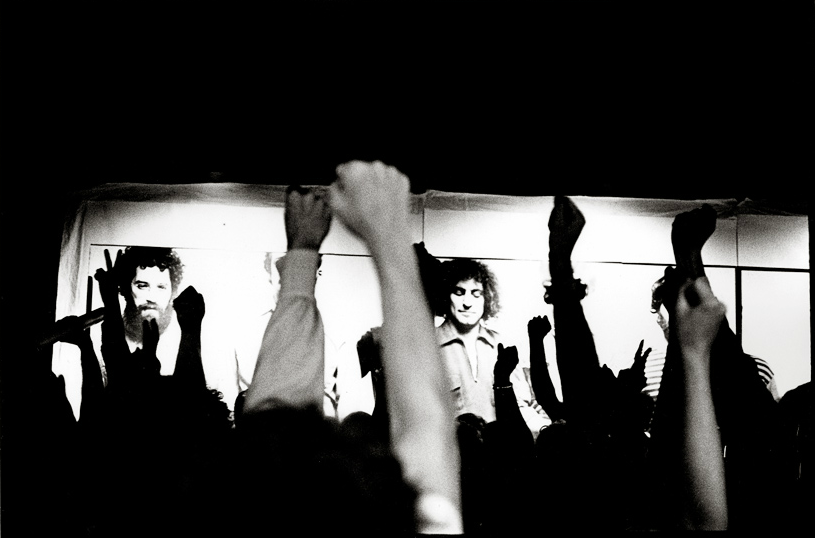By Dan Dennehy, senior photographer and head of Visual Resources at Mia
It looks innocent enough: Richard Avedon, the celebrated New York fashion photographer, sitting cross-legged on the gallery floor surrounded by young admirers. But something tells me they are not talking f/stops and Tri-X.
It is, after all, the summer of 1970. The counter-culture is coming down from the high of Woodstock, President Nixon has escalated the war in Vietnam, four student protesters have been shot dead on the campus of Kent State, and verdicts have just been handed down to the Chicago Seven for inciting a riot at the Democratic National Convention. With the eyes of the nation watching, Avedon was not going to sit still.
At mid-career, the artist had become disillusioned with commercial work and spent the better part of the late 1960s on a more personal project. Using a large-format camera and signature white background, he focused a knowing, dispassionate gaze on the cast of characters in the social-political theater of the day, particularly the luminaries and literati of the radical left—poets, activists, feminists, civil rights leaders—traveling as far as Saigon to photograph soldiers, journalists, and victims of war.
He originally had planned to unveil this new work at MoMA, in New York, sometime after 1972. But the events of the day convinced him not to wait. Instead, the first mural-size portraits and larger-than-life triptychs of the project premiered at the MIA in a self-titled exhibition, running from July 2 to August 30, 1970.
Ted Hartwell, the MIA’s curator of photography, had approached Avedon about an exhibition as early as 1966, but it wasn’t until the fall of 1969 that the artist agreed, with some hesitation, to hang what would be his first major retrospective at an art museum.
It came together fast and furious. Avedon laid out the exhibition in his New York studio using a scale model of the MIA galleries and small thumbnail prints of his photographs. He engaged the assistance of noted designer and art director Marvin Israel, who had the museum walls painted in metallic silver and arranged the bold, borderless images more in the manner of a magazine spread than a typical museum show. As a grand finale, the last room was painted and carpeted in black from floor to ceiling and separated by a curtain. Visitors entered to see eight-foot-tall portraits of the Chicago Seven with audio interviews of the outspoken defendants projected from loudspeakers.

A spontaneous peace rally in the midst of Avedon’s Chicago Seven portraits. Photo courtesy of the Avedon Foundation.
News of the installation spread quickly among Minneapolis youth (legend has it that Hartwell and Avedon drove through town personally inviting any teenagers with long hair and bell-bottoms), and a spontaneous peace rally broke out in the gallery on the night of the opening. In the end, Avedon made an impression and everyone stood up to look.


